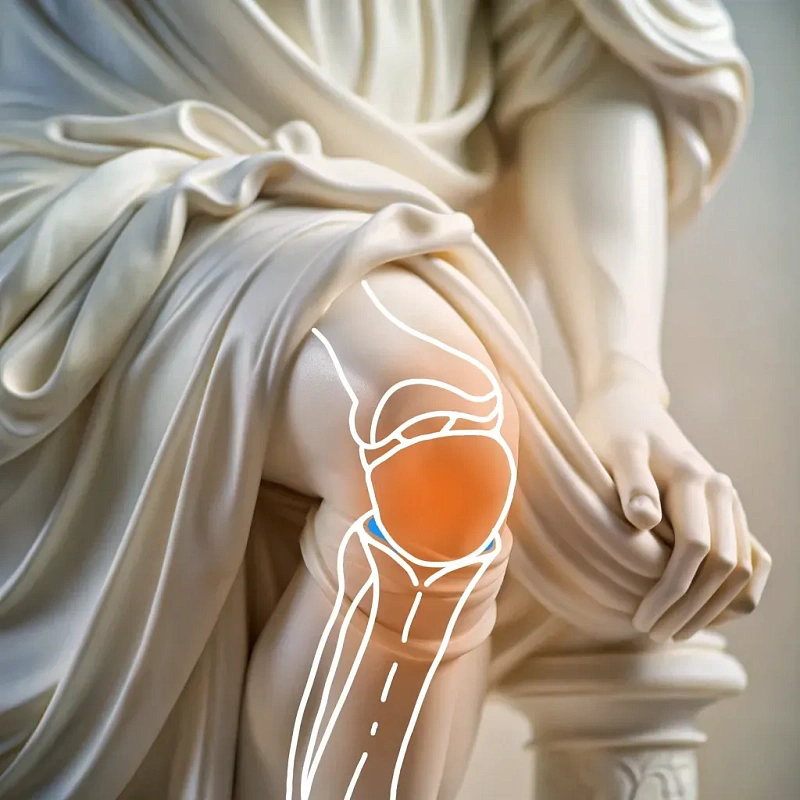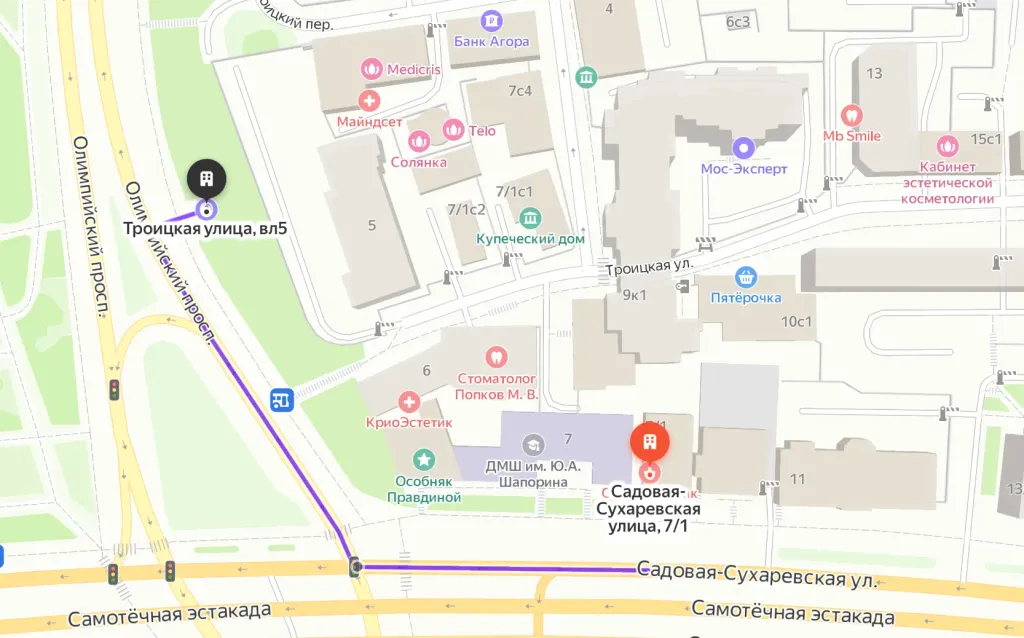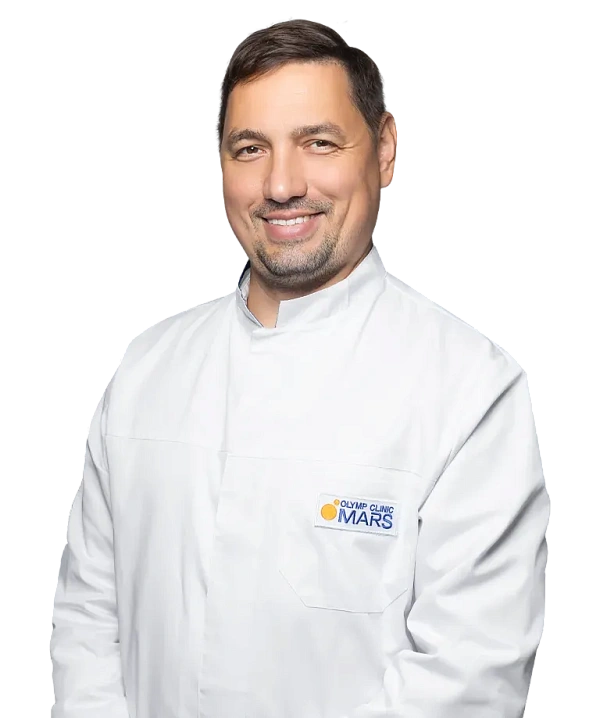Arthrodesis of the joint
This is an operation in which two or more bones in a joint are intentionally fused to eliminate pain and restore function. It is used in the treatment of joints damaged by arthritis, injuries or infections when other treatments prove ineffective.

The main purpose of the procedure is to eliminate pain by creating artificial ankylosis (bone fusion) in a functionally advantageous position. This helps to stabilize the joint, prevent further tissue damage and improve the supporting function of the limb.
The arthrodesis procedure effectively eliminates chronic pain and helps restore the functional activity of the limb, allowing the patient to return to daily activity without restrictions. The procedure also ensures reliable fixation and rapid bone fusion. Arthrodesis of the joint requires careful diagnosis and preparation. After surgery, the patient undergoes a rehabilitation course to restore strength and mobility of the limb.
General blood and urine analysis Coagulogram (assessment of blood clotting) ECG (electrocardiogram) to assess the condition of the heart Radiography of the affected joint Computed tomography (CT) or magnetic resonance imaging (MRI) Consultation with an anesthesiologist to assess the risks of anesthesia
In the early stages of the disease, conservative treatment can be used, including taking painkillers, limiting physical activity and physiotherapy. However, with significant destruction of the joint and severe pain, surgical intervention becomes inevitable. During the operation, the surgeon removes the damaged articular surface and fixes the bones in the correct position using metal plates, screws or pins. This allows the bones to fuse together, forming one solid structure.
Metal plates and screws for secure fixation of bones Imaging systems: X-ray machines and computed tomographs
After surgery, the rehabilitation process begins, including physiotherapy and physical therapy to improve blood circulation, strengthen muscles and restore mobility in the affected area. The rehabilitation process is individual and depends on the general health of the patient and the complexity of the operation.
Frequently Asked Questions
Which joints may be susceptible to arthrodesis?
How long does the recovery after arthrodesis take?
Will the joint be completely immobilized after arthrodesis?
Is it possible to exercise after arthrodesis?
Didn't find an answer to your question?
You can describe your problem in detail and ask a question to the doctor. He will answer you and help you find a solution
Specialists
Find a SpecialistDoctor of Medical Sciences, Associate Professor at the Department of Traumatology and Orthopedics of the RUDN. Head of the Center for Arthroscopy and minimally invasive surgery of the joints of the upper and lower extremities.
Orthopedic Trauma Surgeon
Similar referral activities
Arthroscopy of the ankle joint
Ankle arthroscopy is a minimally invasive surgical procedure used to diagnose and treat various diseases and injuries of the ankle joint.
Arthroscopy of the ankle joint
Ankle arthroscopy is a minimally invasive surgical procedure used to diagnose and treat various diseases and injuries of the ankle joint.
Arthroscopy of the knee joint
Knee arthroscopy is a minimally invasive surgical procedure for the diagnosis and treatment of injuries and diseases of the knee joint. It allows examining the joint for damage and eliminating the identified defects.
Arthroscopy of the knee joint
Knee arthroscopy is a minimally invasive surgical procedure for the diagnosis and treatment of injuries and diseases of the knee joint. It allows examining the joint for damage and eliminating the identified defects.
Arthroscopy of the elbow joint
Arthroscopy of the elbow joint is a minimally invasive surgical intervention that allows for accurate diagnosis and simultaneous treatment of joint injuries.
Arthrodesis of the joints of the fingers of the hand
The destruction of the joints of the fingers of the hand is accompanied by pronounced pain and impaired functions. Arthrodesis is a surgical intervention in which the affected joint is completely immobilized, which relieves pain and progression of inflammation.
News & Media
All news and mediaHow to reach
How to get
From the Belorusskaya metro station of the Zamoskvoretskaya line - exit 4 After exiting the subway, walk through the pedestrian tunnel and climb the stairs. Move towards the railway tracks, go down the stairs immediately after them and walk along the house, then turn right onto 1st Yamskoye Pole Street. At the turn to 3rd Yamsky Pole Street, cross the road at the pedestrian crossing and continue along 1st Yamsky Field Street, after a few buildings on the left you will see Olympus Clinic MARS.
Travel time
9 minutes
Landmark
Olympus Clinic MARS sign
How to get
From the Belorusskaya metro station of the Ring line - exit 2. After exiting the subway, turn left and walk to the pedestrian crossing. Cross the road through two pedestrian crossings and move along the Tverskoy overpass. Go down the stairs immediately after the railway tracks, walk along the house, then turn right onto 1st Yamskoye Pole Street. At the turn to 3rd Yamsky Pole Street, cross the road at the pedestrian crossing and continue along 1st Yamsky Field Street, after a few buildings on the left you will see Olympus Clinic MARS
Travel time
11 minutes
Landmark
Olympus Clinic MARS sign
From the metro station "Tsvetnoy Bulvar"
1 exit to the city, then left to the Garden Ring, at the crossing to the right, crossing the boulevard, one more crossing and at the traffic light to the left. The Olymp Clinic building is located overlooking the Garden Ring to the right of the crossing. Travel time is approximately 9 minutes. Landmark - sign Olymp Clini
From the metro station "Sukharevskaya"
Exit 3 from the metro and 640 meters straight ahead, the clinic will be on the right. Landmark - sign Olymp Clinic
Parking lot map
Exit 3 from the metro and 640 meters straight ahead, the clinic will be on the right. Landmark - sign Olymp Clinic

From Sokol metro station
The last car from the center: follow the signs for Exit 5. From the glass doors to the right and go to the end of the passage. Exit to the city by the steps to the left. After exiting the crossing to the street, go straight along Leningradsky Prospekt to the intersection with Chapaevsky Lane. Next, turn right (onto Chapaevsky Lane) and walk to the Triumph Palace residential complex. Entrance to the territory: through checkpoint No. 1, opposite the Vkusville store, you will need to present your passport. After passing through the checkpoint, go up the stairs to the fountain, opposite it you will see our clinic.
Travel time
10-12 minutes
From the Airport metro station
The first car from the center: follow the Exit 2-3 signs. Turn left out of the glass doors and walk to the end of the passage. After exiting the crossing to the street, go straight along Leningradsky Prospekt to the intersection with Chapaevsky Lane. Next, turn left (onto Chapaevsky Lane) and walk to the Triumph Palace residential complex. Entrance to the territory: through checkpoint No. 1, opposite the Vkusville store, you will need to present your passport. After passing through the checkpoint, go up the stairs to the fountain, opposite it you will see our clinic.
Travel time
12-15 minutes
How to get
Entry to the territory is prohibited, but there are free city parking lots around the Triumph Palace residential complex, where you can easily find a place for your car. Free parking area:





